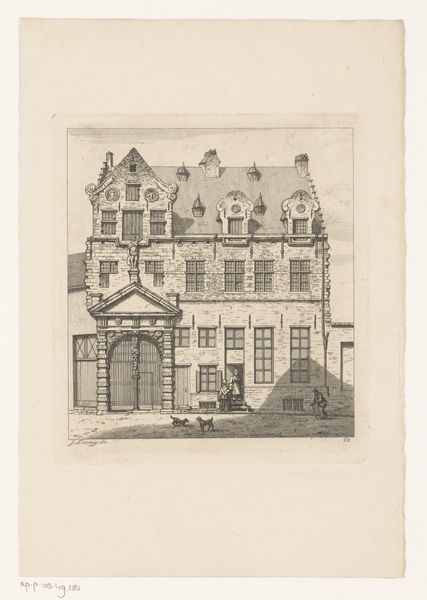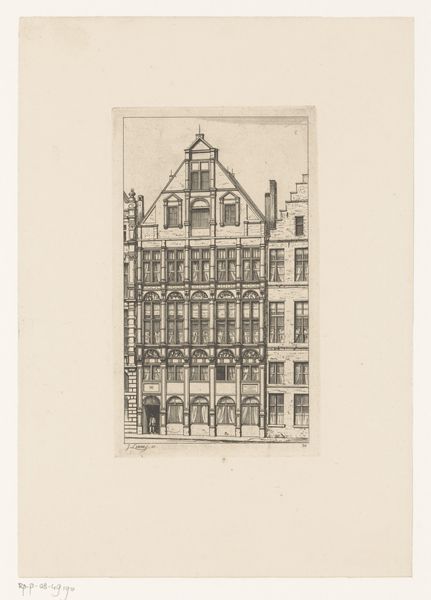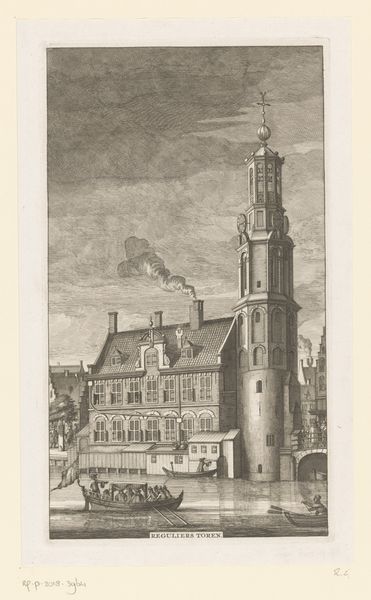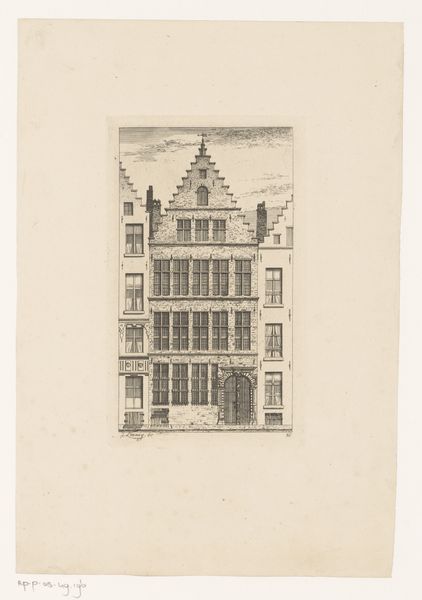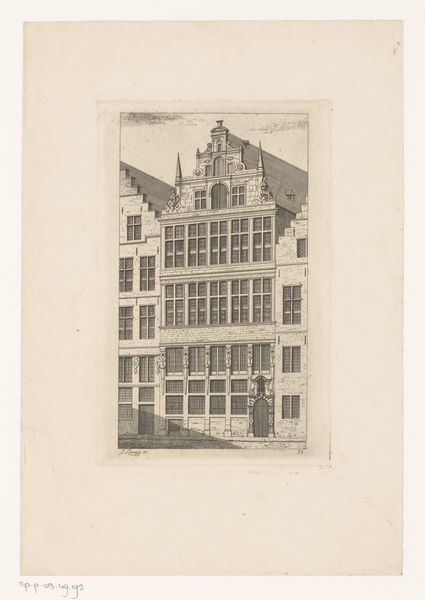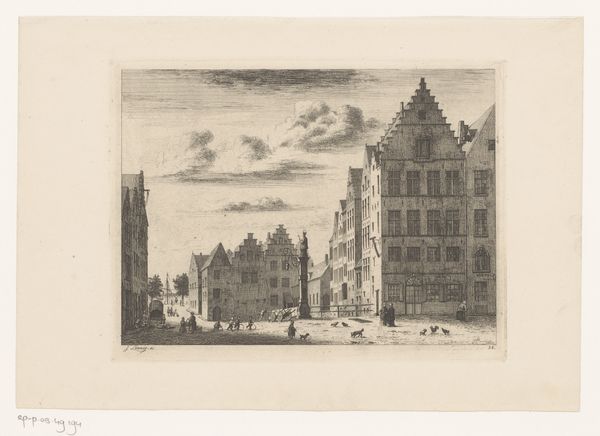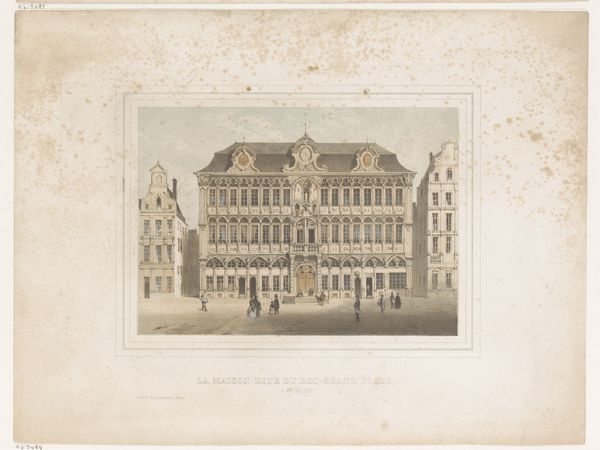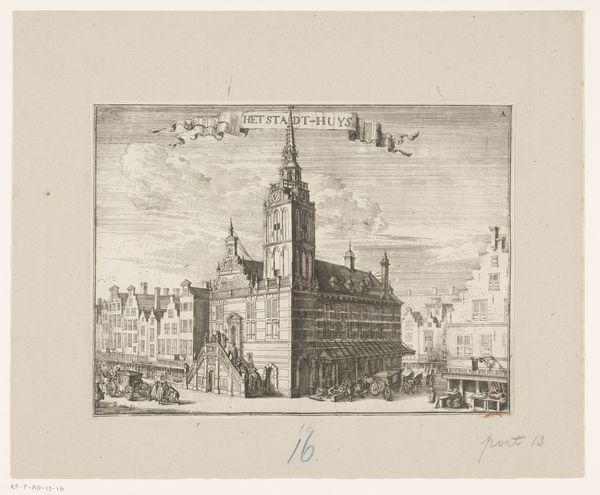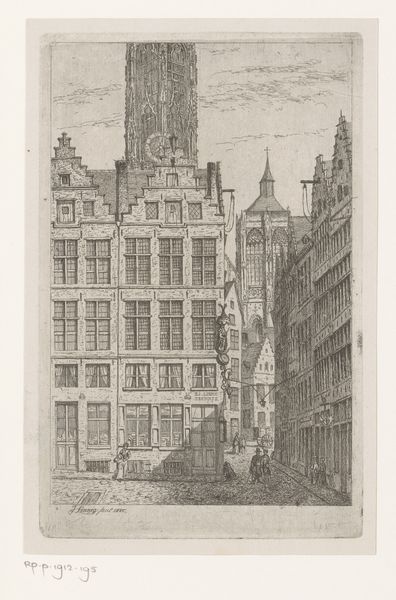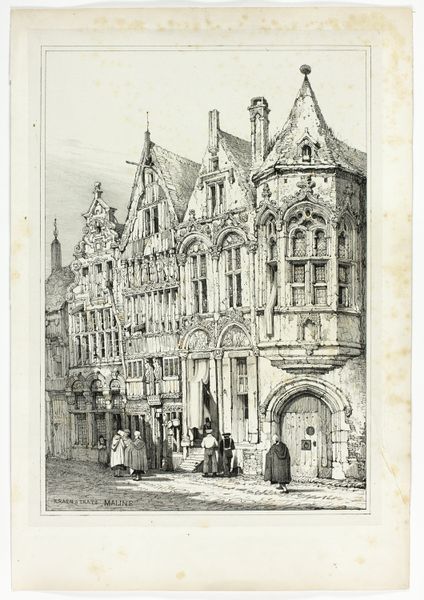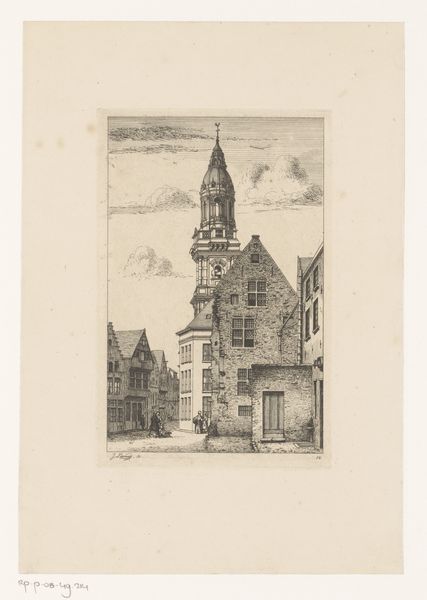
drawing, print, etching, architecture
#
drawing
# print
#
etching
#
landscape
#
etching
#
11_renaissance
#
cityscape
#
architecture
Dimensions: height 351 mm, width 407 mm
Copyright: Rijks Museum: Open Domain
Curator: It’s rather imposing, isn't it? There's a rigid formality to the facade that strikes me immediately. Editor: It certainly does. Let’s delve into the historical and social layers informing this etching. The artwork, titled "Gezicht op twee huizen" by Joannes van Doetechum, was created sometime between 1547 and 1578. The Rijksmuseum currently holds it. Curator: Mid-sixteenth century…The materiality, the etching itself, it speaks to the rise of printmaking as a crucial mode of communication and documentation. Look at the precision used in capturing the architecture’s intricate details! Editor: Exactly. Etchings like this circulated widely, influencing perceptions of urban spaces and architectural ideals. Note the positioning of the buildings; it’s more than just architectural rendering; it’s about power, wealth, and civic identity within the city. The domestic is rendered monumental. Who has access to that space? Who built it? Curator: It also demonstrates how labor shapes both the construction of buildings and their artistic representation. The artist translated stone and mortar into lines on a metal plate, relying on skilled craft. What socioeconomic circumstances enabled it? Editor: Precisely! Think about the social stratifications visible here. This work gives a voice, literally and figuratively, to those voiceless, particularly regarding the construction of space. The lack of human subjects may also signal the era's social attitudes towards the unlanded, the worker class. Curator: A stark image. These buildings stand as testaments to tangible capital, illustrating a concentrated authority of wealthy occupants. It is haunting but equally powerful. Editor: Indeed. The work prompts crucial questions about who gets to build and inhabit space, challenging us to reflect on inequality embedded in the foundations.
Comments
No comments
Be the first to comment and join the conversation on the ultimate creative platform.
